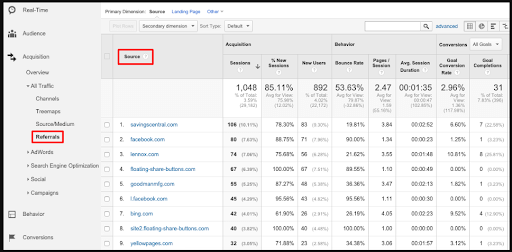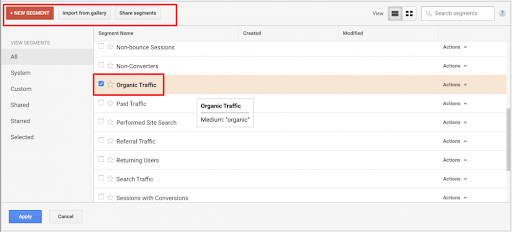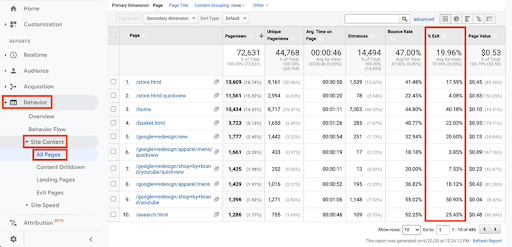There is no denying the fact that every website owner wishes to be on top when it comes to SEO. The moment your audience searches for something you want your business website to be the first link that appears on Google Search, right? I mean, why we shouldn’t desire this. As an audience even we do not move to the second or third pages of the SERP, because it’s too tiring or frustrating? As they say, if you want to hide a dead body there is no better place to hide it than the second page of Google. The best-managed SEO services provide the best results in this case, and there is no better agency that performs this activity better than the Ingenious Guru. So, if your website is almost dead then it’s alright to let it be on the second page, otherwise, it does not deserve to land there.
Now the question arises, how to get on the first page? What managed SEO services to hire for help to get you on top? Well, here are a few Google Analytics guides for beginners that will help you in being the number one priority.
1. Get your Search Console Account Synced
The best way to measure your SEO with Google Analytics is to make a strong connection between the Google Search Console and Analytics. If you are using the GSC with the analytics you will not be able to have a full picture of it or understand it clearly. With the help of the link created between Google Analytics and Google Search Console, you can see different opportunities to amplify and improve the content with the target keywords and the pages that you want to rank.
GSC tells the person the keywords that one must use in order to find the content and see where the content is rightly ranked on the website. You can further analyze the overall information and see the different ways to enhance the optimization of the pages to stand a good chance of ranking on the first page.
2. PPC Expenses Management

One of the most important things is to manage your PPC expenses, this is something that you cannot ignore, and once you ignore it the expenses can go pretty overboard. When you are closely tracking the conversions and keywords you get hold of the expenses and it will help you manage the theme effectively.
3. Develop SEO Goals
The primary goal is to be on the top search, right? But, there are various other goals that you should be focused on while you are designing the SEO campaign. Start with setting up Google Analytics including the goals that get you the conversion pages for tracking not just when the audience comes on your page with the conversion element but also to report when someone fills out the forms.
Moreover, while you are measuring your SEO by using Google Analytics you not only want to track the organic traffic only but also wish to measure the organic visitor’s traffic as well. The only way to do that is by developing your SEO goals which means the leads that are generated coming from the organic SEO only.
4. Look for Referral Sites

If you are actively engaged in off-page SEO strategies we would recommend you understand what link building is and how effective they are. You can use the GA referral information to look for the links that are not added in the other tools and also look for the relevant bloggers and reporters to pitch in.
5. Get Used to Organic Visitor Segment
While you are using Google Analytics for SEO it helps you ensure that you are using the filters and segments in order to remove the traffic spam that reports accurately. There are two main kinds of spam traffic that ruin the reports, fake referrers, ghost spam, and crawlers as well. While you are using filters, traffic needs to be excluded right under the traffic referral which is a comparatively simple task to perform as you need to exclude the right domain. It helps in solving the problem of the first kind of spam traffic.

However, you would also need to get the spam traffic coming directly to your website, which means you need to exclude the traffic that does not really go with your hostname. You should set up the filters on a new view in the GA so you are not dealing with the raw and unedited data. It prevents the spam traffic from coming in your reports from the day you use it, but how would you deal with the irrelevant traffic?
6. Comparison of Organic and Non-Organic Visitors
There is nothing better than getting your Google Analytics broken with the organic visitors. However, it is important that you must focus on some particular pages and track the metrics in order to get the organic traffic, exclude the organic traffic and measure all those metrics as well. The effective and successful efforts of SEO will result in showing a regular increase in organic metrics and traffic but when you exclude the organic traffic you will then be able to spot the poor user experience or design which you can improve and provide an additional boost on the efforts of SEO.
7. Look for Top Content
Content is the real King, the better your content is the more attractive your website will be and rank on the top. You need to make sure you are getting content that is top-notch quality, you cannot compromise over it. What you can do is run down a report on the daily basis of the pages that are top-performing and see what you can do in order to optimize them. Try updating the content with fresh content, plagiarized content, and other low-quality content that would result in blacklisting your website.

Another way to add quality content is to add a strong CTA, it will help you get the maximum return from the different site areas that are in the top ranks and keep all these pages in the top results. It’s better if you get the good tools from tracking the effectiveness of the particular pages. You can also track the views of pages, and dwell time to get as many clicks as you can.
8. Check out How Google Analyze your Business Industry

Stay in the loop of the Google industry views as it is one essential category for your website. Google looks for the sites that are authoritative to rank them on top and this is mainly why they choose the niche topics to rank them better. It’s better to be aware of their views and change your patterns accordingly.
9. Check out Top Landing Pages

When you track the landing page of your competitors you stay in touch with everything that is happening out in the market. This information can help you increase the page views and reduce the bounce rate resulting in recognizing the top and bottom converting pages.
The best way to deal with them is to check out the month’s top landing pages and optimize all top 10 for the following things.
- Readability
- Conversions
- Fresh algorithms of Google
- Make Use of Report of Content Drilldown
One of the best ways to measure SEO by using Google Analytics is by breaking down all your page impressions that are non-sales with the help of the tools of Content Drilldown. This tool is majorly used in order to track down the content page of your blog and see what topics are on the top trends. Once you know about it you can further optimize them with the schemas of FAQ and other lead magnets.
10. Set Annotations for Content Updates Tracking

While you are optimizing your content it is extremely important to track all the results and document them accordingly. The best way to perform this in Google Analytics is to make the best use of the annotation feature on all particular dates. Use this tool as it will help you create the performance benchmark of the article post-optimization. The SEO experts state that most of the changes that are done in SEO take some time to bring in well results and make a good impact; therefore it is recommended to use annotations.
11. Get Used to Multi-Channel Funnel Report
Make sure you are making the right use of these reports, there is a chance that your organic users may not be really organic and all the sources can be overwritten. If you get the user through organic search to come back again directly, it would mean that the user came via search and has left their source as organic. It is therefore important to remember that the source of traffic is a session element rather than just a user.
In order to measure the 180-degree impact of the SEO, get used to the multi-channel funnel report as it will explain to you how the SEO played its part in bringing conversions.
12. Keywords Tracking in Google Analytics

Tracking keywords in GA is no walk in the park due to the fact that the keyword field is not really provided therefore it is difficult to combine all the keywords people generally use in their content. In order to deal with this problem, make sure you are integrating the GA with the SC and making the proper route like Acquisition > SC > Landing Pages in GA. Moreover, you can also use Keyword Hero tools to track the keywords in GA.
Wrapping up
You may not be aware of it but almost 67% of all the clicks go to the first five organic searches only. The gurus of Ingenious Guru realize how important SEO is in the current marketing terms. Advertising is constantly getting bigger and better chunks in marketing expenditure. However, marketers today are steering clear of the regular paid ads that appear in search engines in the organic results favor.







1 Comment